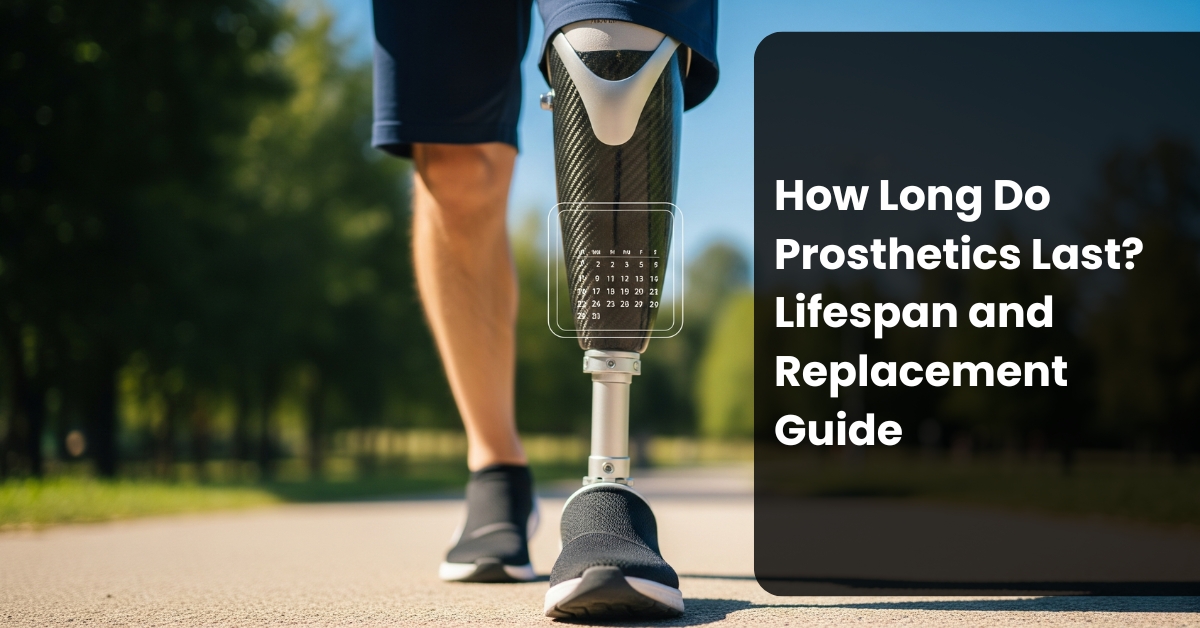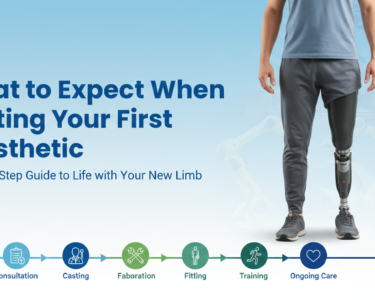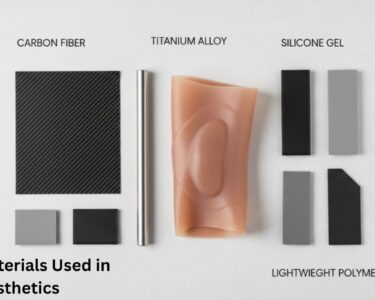For individuals living with limb loss, understanding the lifespan of prosthetic devices is crucial for planning both physically and financially. While prosthetics have revolutionized mobility and independence for amputees, they aren’t permanent solutions and require periodic replacement. The longevity of a prosthetic depends on numerous factors, from the type of device to individual usage patterns.
Average Lifespan by Prosthetic Type
Lower Limb Prosthetics Lower extremity prosthetics, including below-knee and above-knee devices, typically last between 3 to 5 years. These prosthetics endure significant stress from walking, running, and weight-bearing activities, which naturally leads to more frequent wear and replacement needs. Active users may find themselves replacing components even sooner, particularly high-wear parts like feet and knee mechanisms.
Upper Limb Prosthetics Upper extremity prosthetics generally have a longer lifespan, often lasting 5 to 7 years or more. Since arms and hands bear less weight and experience different types of stress compared to legs, the mechanical components tend to deteriorate more slowly. However, myoelectric prosthetics with electronic components may require more frequent maintenance and earlier replacement due to technological wear.
Pediatric Prosthetics Children require the most frequent prosthetic replacements, often needing new devices every 12 to 18 months during periods of rapid growth. As children’s bodies change, their prosthetics must be resized and adjusted to maintain proper fit and function. This frequent replacement schedule is essential for healthy development and continued mobility.
Key Factors Affecting Prosthetic Longevity
Activity Level and Lifestyle Highly active individuals who participate in sports, manual labor, or extensive daily activities will typically wear out their prosthetics faster than those with sedentary lifestyles. Each step, movement, and impact contributes to the gradual breakdown of mechanical components and materials.
Body Weight and Physical Demands Heavier individuals place greater stress on prosthetic components, particularly in lower limb devices. The constant pressure and force can accelerate wear on joints, attachment systems, and structural elements, potentially reducing the overall lifespan of the device.
Environmental Conditions Exposure to extreme temperatures, moisture, sand, or chemicals can significantly impact prosthetic durability. Beach environments, construction sites, and other harsh conditions may require more frequent maintenance and earlier replacement of certain components.
Quality of Components and Materials Higher-quality prosthetics made with premium materials and advanced engineering typically last longer than basic models. When selecting components, consulting with a reputable prosthetic feet manufacturer ensures you get the right match for your activity level and lifestyle needs. While the initial investment may be greater, superior components often provide better longevity and performance over time.
Signs It’s Time for Replacement
Physical Wear and Damage Visible cracks, excessive wear patterns, loose connections, or broken components are clear indicators that replacement is necessary. Continuing to use a damaged prosthetic can lead to safety issues and potential injury.
Comfort and Fit Issues Changes in residual limb size, persistent pain, pressure sores, or difficulty achieving proper fit suggest that the prosthetic may no longer be suitable. Weight fluctuations, muscle changes, or natural body changes over time can affect how well a prosthetic fits and functions.
Declining Performance Reduced stability, decreased range of motion, unusual sounds during operation, or difficulty performing previously manageable tasks indicate that the prosthetic’s functionality has deteriorated beyond acceptable levels.
Extending Prosthetic Life
Regular Maintenance Following manufacturer maintenance schedules, keeping the device clean and dry, and addressing minor issues promptly can significantly extend prosthetic lifespan. Regular professional tune-ups help identify potential problems before they become major failures.
Proper Usage and Care Using the prosthetic within its designed parameters, avoiding excessive stress or inappropriate activities, and storing it properly when not in use helps preserve its integrity and functionality.
Professional Monitoring Regular check-ups with prosthetists ensure optimal fit and function while identifying wear patterns or emerging issues that might require attention.
Planning for Replacement
Most insurance plans recognize the need for periodic prosthetic replacement and typically cover new devices every 3 to 5 years for adults. Understanding your insurance coverage and beginning the replacement process early ensures minimal disruption to daily activities.
The lifespan of prosthetics continues to improve with advancing materials and manufacturing techniques. While replacement is inevitable, proper care, realistic expectations, and proactive planning help maximize both the functional life of the device and the user’s quality of life throughout their prosthetic journey.
Disclaimer:
This content is for informational purposes only and should not replace professional medical advice. Always consult your prosthetist or healthcare provider for personalized recommendations.








